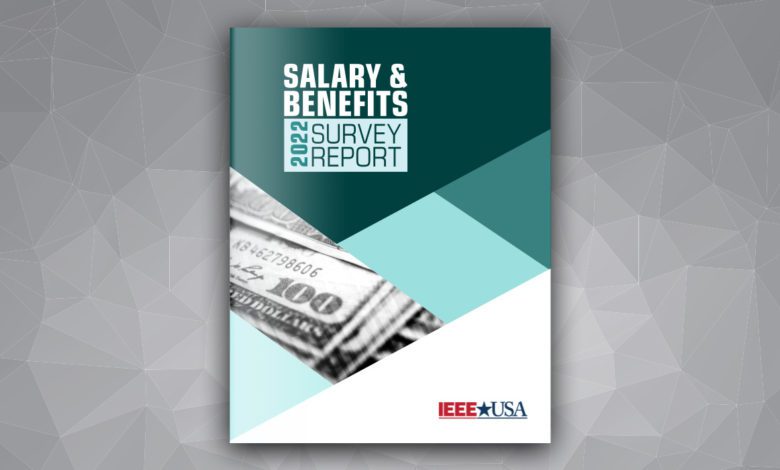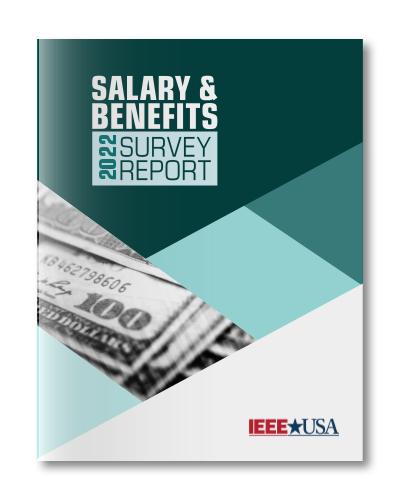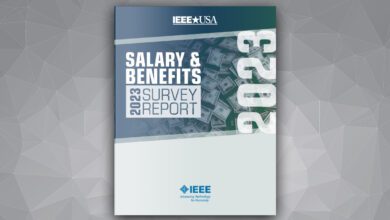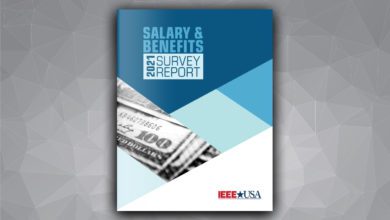
IEEE-USA has just released its 2022 Salary and Benefits Survey Report of IEEE’s U.S. members. The extensive report gives breakdowns of income (usually median, as well as top and lowest decile and quartile) by geographic region, economic sectors, job types, experience, gender, and race — with charts and tables for readers’ deeper examination. The report shows the median base salary increased five percent from 2021-2022.
For the first time, the study surveyed those who have started a new job (10% of respondents), probing why they had left their previous employer. Two-thirds of the respondents indicated that increase in base salary was a major reason for switching employers. A significant number also indicated they wanted to take on new job responsibilities. The typical increase in base salary for those taking new positions was 21%.
“In a tight labor market, there were real benefits to exploring jobs at new companies,” said Daryll Griffin who oversees the annual survey for IEEE-USA. “While salaries increased modestly overall, those switching employers saw an increase of more than 20%. We also saw a decrease in overall satisfaction with compensation among those who responded to the survey.”
IEEE-USA has surveyed its members since 1972. This year, 4,650 IEEE member participated, including 3,057 employed full time in their primary areas of technical competence (PATC) — the most relevant group from both employer and employee viewpoints.
The report provides salary breakdowns in eight large categories, and more than 50 subcategories. Those respondents in management had the highest median income ($200,000), while those in education and quality control had the lowest (both $110,000).
Other salary information from the survey includes:
- Communications Technology continues to yield the highest median earnings ($193,000); while Energy and Power Engineering is at the bottom ($142,000).
- Respondents working at nonprofit institutions, and in private industry, earned top primary incomes in calendar year 2021; while those working in educational institutions, and state or local government, earned the least.
- The number of respondents indicating they received stock options rose to one in five (from one in six last year), and the estimated value of the options rose from $25,000 to $30,000.
- Those working for the largest employers (more than 10,000) reported higher median incomes ($179,000); those with the smallest firms (less than 10) had the lowest median income ($129,000).
- Not surprisingly, median salaries rise with years of experience, starting at $85,500 for those starting out to $180,750 for those with more than 45 years of experience.
- Respondents from IEEE’s West Region has the highest median income ($183,021), while the Central Region has the lowest ($137,000). The report also breaks down data by state (if there are at least 15 responses), with California having the highest regional salary ($201,600).
The report noted that, “since these surveys began in 1972, IEEE’s U.S. members have become somewhat more diverse, but the change is slow.” Asians and Pacific Islanders are the largest minority group (11.9% of respondents) followed by Hispanics (4.3) and African Americans (2.2). One of four respondents were not born in the United States.
The gap between incomes of White and Black respondents remains, but decreased significantly from last year — with a gap of $13,000, down from $24,000 in the last survey. Women’s salaries continue to trail men’s, even considering experience levels, and this year the gap grew. Ten percent of respondents were woman.
The report provides a great deal of non-salary information as well, including:
- The average respondent has been with their current employer an average of 11.5 years — which has risen steadily since 2008 when it was 8.7 years.
- Twenty-five percent of respondents indicated they worked in excess of 50 hours a week (up from 14% last year).
- Roughly one in three respondents hold a Ph.D. (The report provides extensive information on pay by highest degree granted, public vs. private school, tenure vs. non-tenured, etc.)
- Respondents split almost evenly between those who work for companies with over 10,000 employees (30%), companies with between 500 and 10,000 (35%), and smaller companies (35%). These percentages have remained constant since 2008.
- One in 10 respondents worked in academia, either as teachers or in research.
The IEEE-USA Salary & Benefits 2022 Survey Report is a great resource for the HR manager wishing to keep their company’s salaries and benefits competitive; engineers thinking of switching to a new area of expertise, or a new region of the country; students getting ready to enter the workforce; or simply someone wanting to see how their salary and benefits compare to those of others in their field.
The complete, 66-page, 2022 IEEE-USA Salary & Benefits Survey Report is available from the IEEE-USA shop. The member price is $125; non-members pay $225.







